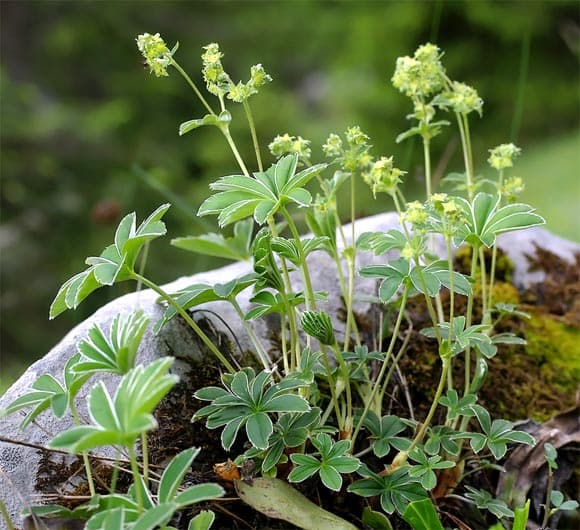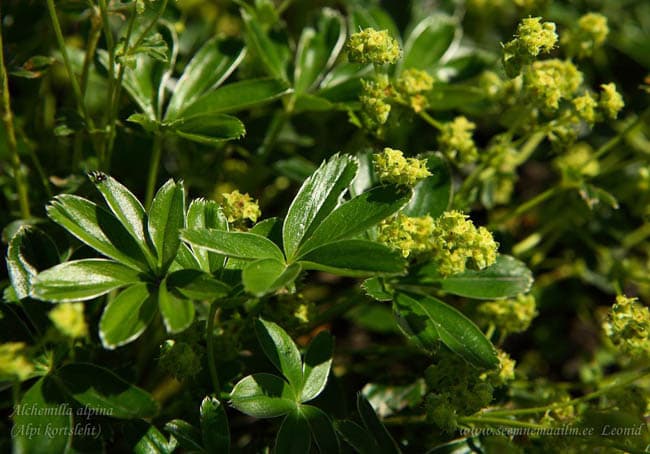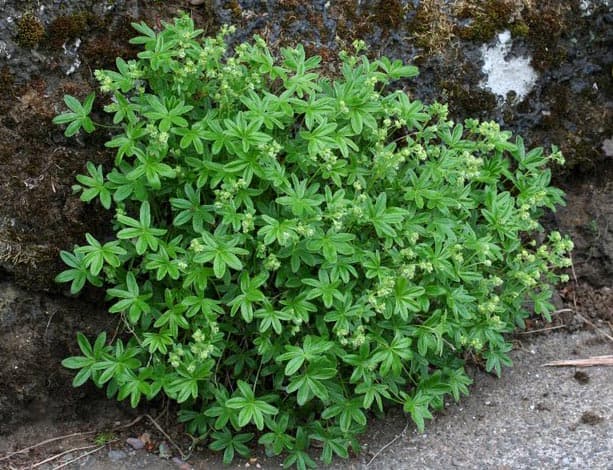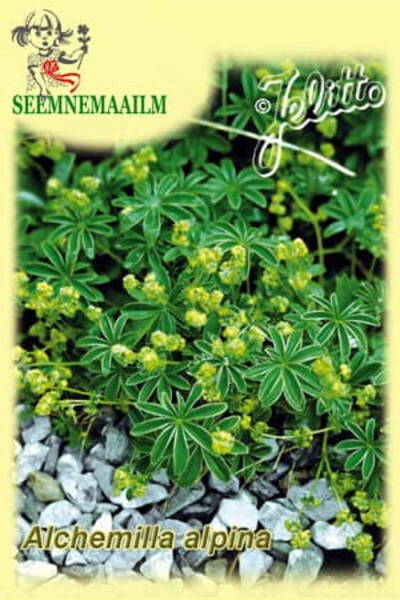For the rock-garden. Avoid lime. Officinal (medicinal) plant.
Dense blossoms, yellow, foliage dark green, silvery base, ground cover.
Flowering period: Juni-August.
Zone: Z3-Z8.
Height: 15 cm.
Gram to get 1000 plants = 1,0 g.

She has one remarkable property. This property is directly related to the structure of the leaf blade - its funnel-shaped shape and the soft pubescence of the leaves. Early in the morning or after rain, droplets of heavenly moisture gather in the centre of the leaf. Decorate with small "diamonds" and the edge of the leaf blade. The combination of piercing greenery and the sparkle of water balls makes an amazing impression. No wonder one of the names of the cuff is "God's tears" ... It is believed that such droplets are formed even in the absence of precipitation and dew. This release of water droplets by plant parts is called guttation, i.e. the formation of tears.
Application in medicine. The plant contains glucose, fructose, choline, phenols, lignin, tannins, the highest aliphatic hydrocarbon octacosanol, lecithin, oleic and linoleic acids.
Infusion of herbs in European countries is used as a diuretic and wound healing. 10 g of chopped dry grass per 1 cup of boiling water, leave for 2 hours and strain. Use 1-2 tablespoons 3 times a day 30-40 minutes before meals as a diuretic. The same infusion in the form of lotions can be used for wound healing.


Alpine Lady's-mantle. Bot. syn.: Alchemilla glomerata E.G.Camus.
* Cold germination is still referred to as frost germination, although this is not quite correct. The sowing must be kept warm (about +18+22 °C) and moist for the first 2-4 weeks. After this period the sowing must be kept at a cold temperature (between -4 and +4 °C) for another 4-6 weeks. It is not so important if the temperature is higher or lower during the cooling period, but the cooling period has to be prolonged because the synthesis of the germination inducer, hormone-like acid, slows down or comes to a standstill.
It is beneficial to cover the sowing with snow during the cooling period. The temperature below it usually keeps in the optimum range of -4 °C to 0 °C. The sowing is kept moist, and the melting snow helps to destroy the shell, which is advantageous for germinating seedlings. After this cooling period, the sowing may not be immediately exposed to high temperatures. The most effective temperatures are between +5 to +12 °C, even if germination has started. The best location for this sowing, even in March, April and May, is the open field, the cold frame or a cold greenhouse.












